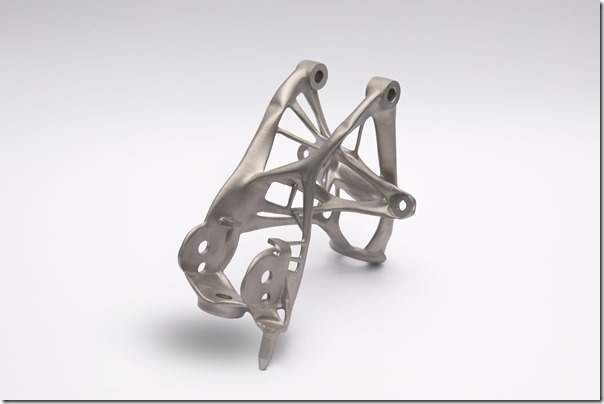GM and Autodesk Advancing Design and Manufacturing
General Motors is working with Autodesk on utilizing advanced design software and 3D printing capabilities to develop parts that are not only lighter than those otherwise developed, but which combine what would otherwise be separate parts, thereby reducing manufacturing complexity.
General Motors is working with Autodesk on utilizing advanced design software and 3D printing capabilities to develop parts that are not only lighter than those otherwise developed, but which combine what would otherwise be separate parts, thereby reducing manufacturing complexity.
It’s called “generative design.” Essentially, through the use of advanced AI-based algorithms and cloud computing horsepower they are able to run through hundreds of configurations on the way to finding the best design.
According to Ken Kelzer, GM vice president, Global Vehicle Components and Subsystems, “When we pair the design technology with manufacturing advancements such as 3D printing, our approach to vehicle development is completely transformed and is fundamentally different to co-crate with the computer in ways we simply couldn’t have managed before.”

To get to this proof-of-concept 3D-printed seat bracket, GM engineers, working with Autodesk generative design software, quickly assessed more than 150 different approaches to the design before coming up with this.
As an example, they developed a 3D printed seat bracket that combines what would otherwise be eight different components into a single structure, a structure that is 40 percent lighter and 20 percent stronger than one made with conventional processes.
Explains Scott Reese, Autodesk senior vice president for Manufacturing and Construction Products, “Generative technologies fundamentally change how engineering work is done because the manufacturing process is built into design options from the start. GM engineers will be able to explore hundreds of ready-to-be-manufactured, high-performance design options faster than they were able to validate a single design the old way.”
RELATED CONTENT
-
Ford Copies Nature
As Nature (yes, capital N Nature) has done a pretty good job of designing things, it is somewhat surprising that Man (ditto) doesn’t follow Nature’s lead more often when it comes to designing objects.
-
Multiple Choices for Light, High-Performance Chassis
How carbon fiber is utilized is as different as the vehicles on which it is used. From full carbon tubs to partial panels to welded steel tube sandwich structures, the only limitation is imagination.
-
Increasing Use of Structural Adhesives in Automotive
Can you glue a car together? Frank Billotto of DuPont Transportation & Industrial discusses the major role structural adhesives can play in vehicle assembly.


.jpg;width=70;height=70;mode=crop)








